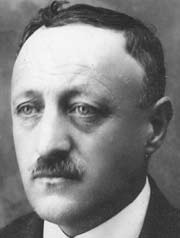Rıza Nur
Rıza Nur | |
|---|---|
 Rıza Nur in the 1920s | |
| Born | August 30, 1879 Sinop, Ottoman Empire |
| Died | September 8, 1942 (aged 63) Istanbul, Turkey |
| Resting place | Merkezefendi Cemetery, Istanbul |
| Occupation | Surgeon, politician, writer |
| Nationality | Turkish |
| Education | Medicine |
| Alma mater | Military Medical School |
Riza Nur (August 30, 1879 in Sinop–September 8, 1942 in Istanbul) was a Turkish surgeon, politician and writer.
Early years
After graduating from the Military Medical School in 1901 Riza Nur went on to work as a surgeon at Gülhane Military Hospital before returning to the Military Medical School as an academic in 1907.[1] Before this an early posting had seen him serve on the border with Bulgaria where his job was to check if imported flour was contaminated with killer germs, after the Sultan had claimed this to be the case. The somewhat foolish nature of the work, as well as the refusal of his superiors to supply Riza with a microscope and other basic scientific tools, helped to convince him that Abdul Hamid II's rule was backward, corrupt and leading Turkey into severe decline.[2] He entered politics following the adoption of a constitutional monarchy but was imprisoned and later exiled for coming into conflict with the Committee of Union and Progress (CUP) administration, remaining a dissenting voice from abroad.[1] Feeling that Turkey was too reliant on Germany but accepting that the country needed a close relationship with a bigger power to prosper he toyed with the idea of a United States mandate in Turkey in the immediate aftermath of World War I.[3]
In Government
Returning to Turkey in 1919 he was a founder member of the Grand National Assembly of Turkey and was appointed Minister of National Education in 1920 and Minister of Health and Foreign Affairs in 1921, as well as serving as the envoy at the 1921 Treaty of Moscow and the Conference of Lausanne.[1] For Kemal Ataturk, Riza was an important appointment as his presence in government, along with that of Ahmet Ferit, lent weight to Ataturk's claims to being a uniting force, as both men had been opponents of the CUP which provided most government ministers.[4]
At Lausanne Riza was sent as assistant to the head of the Turkish delegation İsmet İnönü.[5] It was he who proposed the motions recognising the Grand National Assembly as the legitimate government of Turkey, the end of the monarchy but the continuing control of the Caliphate by the Turkish government.[6] However whilst at Lausanne he also came to blows with the former Prime Minister of Greece Eleftherios Venizelos over the issue of the Pontic Greeks.[7] Indeed what the Allies saw as Riza's intransigence over both this issue and that of the Armenians led to a Yugoslavian delegate claiming that Riza was "beginning to show the cloven hoof".[8]
Later years
Following the formation of the Turkish Republic, Riza Nur fell out of favour somewhat and he left the country in 1926 after an attempt on the life of Ataturk at Izmir.[1] Riza condemned the executions of Mehmet Cavit Bey and the other alleged conspirators arguing that, whilst he personally disliked the men who had been his own political opponents, he felt that they had not been involved in the plot and so were unjustly killed.[9] Embittered at the fall-out with his former ally, Riza also wrote widely about Ataturk's alleged alcoholism.[10] Returning from exile in Paris and Alexandria after Atatürk's death he published the Tanridagi journal, which supported Turanism.[1]
Rıza Nur was also a noted writer on a number of topics, with his most well-known work being a history of Turkey in 14 volumes.[11]
He died at the age of 63 and was buried at the Merkezefendi Cemetery, Istanbul.[1]
Works
- Servet-i Sahane ve Hakk-i Millet (Royal Wealth and the Right of the People) (1909)
- Meclis-i Mebusan'dan Firkalar (Parties of the Chamber of Deputies) (1910)
- Tibbiye Hayatindan (Of Medical Life) (1911)
- Cemiyet-i Hafiye (The Secret Organization) (1914)
- Gurbet Dagarcigi (The Vocabulary of the Exile) (1919)
- Hürriyet ve Itilaf Nasıl Doğdu, Nasıl Öldü (The Freedom and Accord Party: How Was it Born and How Did it Die?) (1919)
- Türk Tarihi (Turkish History, 14 vols) (1924–26)
- Arab Siir Birligi (The Arab Poetry Union) (1926)
- Hilalin Tarihi (History of the Crescent) (1933)
- Ali Sir Nevai (1935)
- Namik Kemal (1936)
- Hücumlara Cevaplar (Replies to the Attacks Made) (1941)
- Hayat ve Hatiratim (My Life and Memoirs) (1968)
References
- ^ a b c d e f Profile on Find a Grave
- ^ Andrew Mango, Atatürk, London: John Murray, 2004, p. 18
- ^ Mango, Atatürk, p. 246
- ^ Mango, Atatürk, pp. 323-4
- ^ Mango, Atatürk, p. 357
- ^ Mango, Atatürk, pp. 363-4
- ^ "VENIZELOS AND RIZA CLASH AT LAUSANNE; Altercation Between Ex-Premier of Greece and Turk Envoy Disrupts a Session. ALARM IN THE NEAR EAST Conference Is Told of Massacres of Moslems and of Destitution of Christian Refugees. Alarming Reports From East. Conference on the Straits". New York Times. December 22, 1922. Retrieved 2008-08-10.
- ^ Copyright, EDWIN L. JAMES. (December 23, 1922). "TURKS' ARROGANCE DAMPS PEACE HOPES; They Take Back Straits Concessions and Break Off Economic Parleys.ALLIES SHOW THEIR ANGER Call Riza Nur Bey's Attitude Insolent and Say He is "Showing the Cloven Hoof."". New York Times. Retrieved 2008-08-10.
- ^ Mango, Atatürk, p. 452
- ^ Mango, Atatürk, p. 274
- ^ Sinop profile
- 1879 births
- 1942 deaths
- Turkish exiles
- Turkish historians
- Turkish surgeons
- Government ministers of Turkey
- Deputies of Sinop
- Recipients of the Medal of Independence with Red-Green Ribbon (Turkey)
- Ministers of National Education of Turkey
- Turkish non-fiction writers
- Burials at Merkezefendi Cemetery
- Turanism
- Ottoman people
- Turkish nationalists
